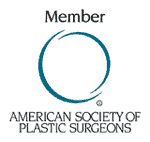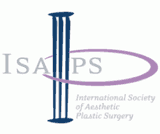Breast Augmentation. The procedure

Breast Augmentation has gained considerable popularity during the 80s.
Indeed, the number of women who underwent breast augmentation in 1990 was 90,000 in the USA, and hence the number increases by 30-40% each year.
The same applies in Greece, where the number of women visiting plastic surgeons for breast augmentation increases year by year.
When is a woman a good candidate for the surgery?
-
The first indication for a breast augmentation surgery is the small-sized breast (insufficient breast volume). This hypoplasia, as it is called, can be the result of either a growth defect or degenerative process, with the latter manifesting as breast ptosis (sagging) or pseudoptosis (empty or deflated breast). Breast augmentation with the applicably sized implants restores the majority of the cases, unless severe ptosis is present (2nd to 3rd grade); in this case, a breast lift may also be necessary in order to deliver an overall satisfying outcome.
-
The second indication depends on the first indication, as it relates to the psychology of the woman, young or older, with small and hypoplastic breasts. Commonly, women who wish to undergo breast augmentation harbor the feeling that their breast is small and have doubts about their femininity. This in turn, leads to low self-esteem and lack of self-confidence. Others feel that the disorder is an obstacle in their sex life. It is really impressive how their overall behavior and relations with their environment and partner change after the operation,
The stages of the surgery
-
Meeting with the plastic surgeon.
-
Surgery and
-
Postoperative progress.
1. When visiting the surgeon, one must report his/her full medical history. The attending surgeon will record the family history of the patient with due diligence, paying attention to the presence of any breast malignancies that might have occurred in the family. Then, the surgeon performs a clinical examination and breast palpation. Preoperative lab tests (CBC, coagulation tests, ECG, chest x-ray) are compulsory prior to plastic surgery procedures. The plastic surgeon must also assess whether a mammography is needed prior to the surgery.
2. Several
methods
have been advised in one’s effort to estimate the implant size required in
each case. Methods chosen by Dr Kapositas take place in the office and comprise
Types of Implants
Marketed breast implants are divided into textured and smooth surface implants and are categorized according to their projection into Low, Moderate and High profile. Cohesive implants constitute a recent advance, yet they outstand their long-term effectiveness. Finally, anatomic (teardrop) implants have more specific indications. For more details on Cohesive silicone implants, please see here...
Watch Dr Kapositas on video elaborating on the technical specifications on all types of implants used in breast augmentation.

3. The surgery is performed either under general or local anesthesia and sedation (with an anesthesiologist being present). The most popular breast augmentation techniques are performed either with an incision at the lowest part of the breast, or on the areola, or in the armpit. Each technique has its pros and cons. All details are thoroughly discussed prior to the surgery, and each surgery is a different case that should be treated accordingly. The implant is placed under the gland or under the muscle. Each implant insertion bears different indications and different morbidities. The surgery lasts about 1-1/2 hours.
New Breast Augmentation Technique with Subfascial Implant Placement (SF Technique)

Breast Anatomy (pectoral muscle, fascia, mammary gland)

Placement of silicone under the mammary gland

New subfascial technique: placement of silicone under the fascia

Placement of silicone under the pectoral muscle
To date, breast augmentation is done by placing the implant under the gland or the pectoralis major muscle. Both positions have their advantages and disadvantages and, accordingly, their followers. But what makes some plastic surgeons opt for the pectoralis major muscle is the better coverage of the implant, the slight feeling of the implant presence and the reduction of rippling, i.e. the creases felt around the implant during palpation. However, there are many cases where although the implant was placed under the muscle, creases highly manifest on these points.
A muscle cannot provide full coverage when large-sized implants are placed. On the other hand, many advocates of the technique (i.e. under the gland), usually observe the breast rounding up on the upper pole or rippling (creases) in women with poor quality skin and insufficient glandular tissue.
This new implant placement technique, i.e. under the fascia-pocket of the pectoralis major muscle, has become a revolutionary solution.
This technique delivers an excellent aesthetic result, given it limits the rounding up of the upper breast pole.
What exactly is the subfascial plane and where is the implant placed?

The subfascial plane is located under the deep fascia of the chest and the fascia covering the surface of the pectoralis major muscle. The breast is attached onto this fascia by the upper 2/3. The implant is completely placed under the fascia which, apart from the pectoralis major muscle, also covers other muscles, such as the serratus anterior muscle and the rectus and oblique abdominal muscles. The implants we use are of cohesive gel with textured surface (cohesive silicone) and the recommended incision is that performed in the submammary line, measuring 3-3.5 cm.
Where is the technique indicated?
-
In women with small and hypoplastic breast.
-
In women whose breast volume decreased after childbirth(s)
To assess the result of a breast augmentation surgery, one has to consider the following:
-
Appearance: there is no doubt that when the implant is placed under the muscle, a ‘bump’ appears on the upper part of the breast. This is what we call the ‘baseball effect’. When the implant is placed under the fascia, the breast has a more natural-looking appearance.
-
Movement: muscle movement forces the implant to move upwards when placement is performed under the muscle. Commonly, it is women who work out who observe this movement (breast implants change)
-
By placing the implant in the pocket under the fascia, this movement is not observed.
-
Position: following the subfascial placement of the implant, healing occurs normally. When placed under the muscle, healing requires downward pressure on the implants for some time – this is not required when the implant is placed under the fascia (subfascial).
Watch Dr Nodas Kapositas,M.D,PhD to perform an subfascial breast augmentation case

The Advantages of the Subfascial Technique
Applying the new technique enables us to deploy the advantages of the one technique or the other, and leave their disadvantages behind:
-
Any implant deformity or malformation is avoided.
-
There is sufficient tissue to cover the implant and avoid the implant margins being directly felt on palpation.
-
No rippling occurs in the upper pole of the breast.
-
The surgery wound is smaller and thus recovery is faster.
-
The muscle behind applies pressure on the implant and makes it softer, and consequently more natural-looking,
-
We achieve upper pole fullness, and the breast profile has a more natural-looking appearance in terms of aesthetics.
-
There is no breast sagging because the fascia anchors the implant between the superficial fascia (Scarpa’s fascia) and the deep breast fascia, between the anterior and posterior retinacular ligaments.
4. By the end of the surgery, the woman
wears a soft bra and keeps it for 2-3 weeks. The patient is discharged a few
hours after the surgery, or stays overnight; the dressing is changed on the
next morning. Antibiotics are given to the patient for prevention. The
operated patient is advised to exercise mild massage on her breast after the
6th postoperative day. This helps keep the pocket the implant was placed in
open, while at the same time it eases the concerns of the patient regarding
touching her new breast.
Complications, if any, are immediately treated. Given the new generation
implants, capsule formation, a problem of the 80s, is now rare.
Watch a short video where 4 young girls who underwent breast augmentation with our technique describe their experience right after the surgery and their individual recovery process.

The natural progress of the breast after breast augmentation
The implant is soon integrated into the woman’s body and periodic breast screenings are not affected (Mammography, Ultrasounds, MRIs). According to a number of clinical studies, breast implants are not linked with breast cancer.
However, women with a family history of breast malignancies must be subjected to mammography prior to the surgery.












